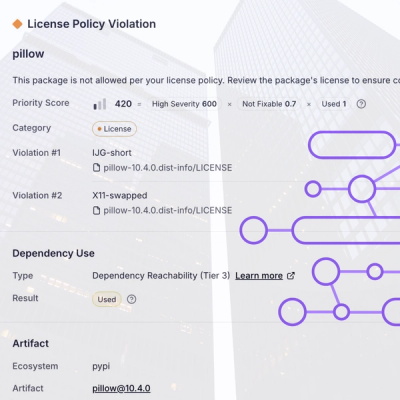
Research
/Security News
Critical Vulnerability in NestJS Devtools: Localhost RCE via Sandbox Escape
A flawed sandbox in @nestjs/devtools-integration lets attackers run code on your machine via CSRF, leading to full Remote Code Execution (RCE).
discord-cli-node
Advanced tools
This is a discord client written is node.js for the CLI. It allows you to send and read messages from a discord server.
You can follow ##Installation to download and install this project or use the npx package (npx discord-cli-node)
This project was created to help with development where it can be annoying to change windows just to try talking to a command. This can be used to send/read messages.
Make sure node v20+, yarn and git is installed on your computer
Download and open the folder
git clone https://github.com/kozmiknano/discord-cli-node
cd discord-cli-node
Install the deps
yarn
Now you can get a discord bot token and do one of two things
yarn start) and paste your token in.env file and create a variable like so:DISCORDTOKEN=yourdiscordtokenhere
Then run the program (yarn start)
FAQs
A discord cli client written in node js.
The npm package discord-cli-node receives a total of 0 weekly downloads. As such, discord-cli-node popularity was classified as not popular.
We found that discord-cli-node demonstrated a not healthy version release cadence and project activity because the last version was released a year ago. It has 1 open source maintainer collaborating on the project.
Did you know?

Socket for GitHub automatically highlights issues in each pull request and monitors the health of all your open source dependencies. Discover the contents of your packages and block harmful activity before you install or update your dependencies.

Research
/Security News
A flawed sandbox in @nestjs/devtools-integration lets attackers run code on your machine via CSRF, leading to full Remote Code Execution (RCE).

Product
Customize license detection with Socket’s new license overlays: gain control, reduce noise, and handle edge cases with precision.

Product
Socket now supports Rust and Cargo, offering package search for all users and experimental SBOM generation for enterprise projects.